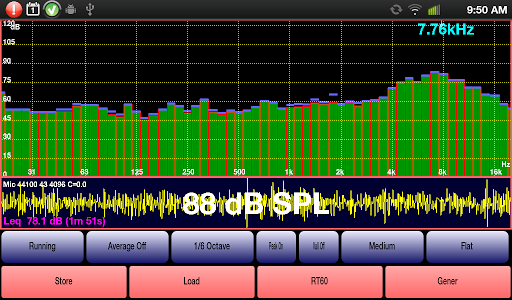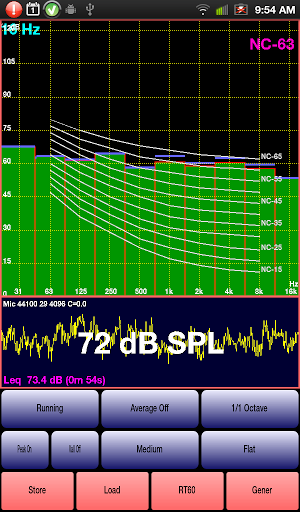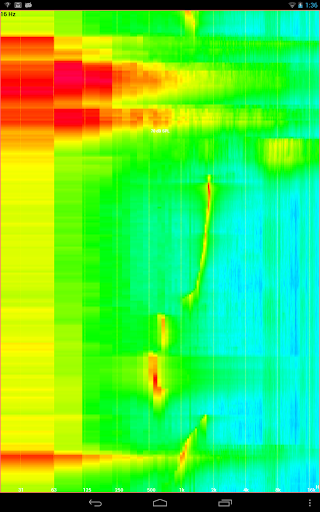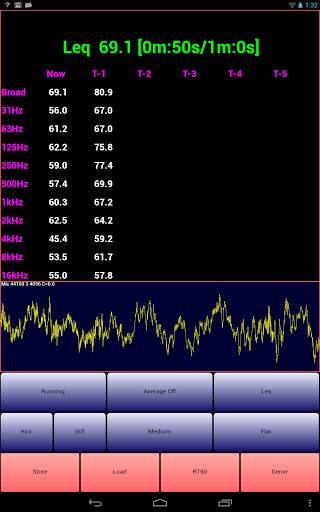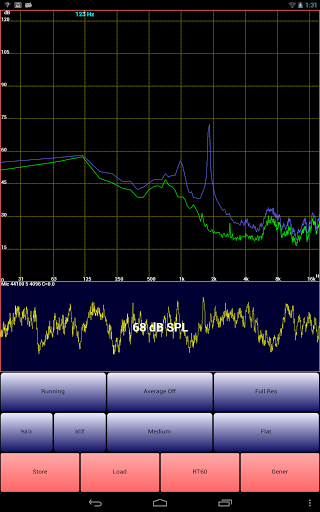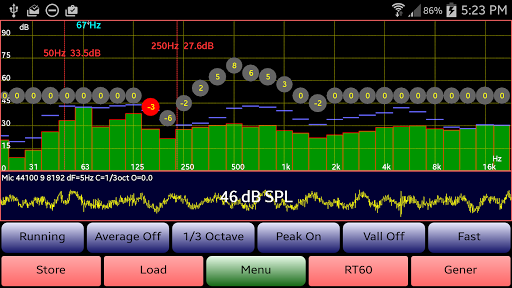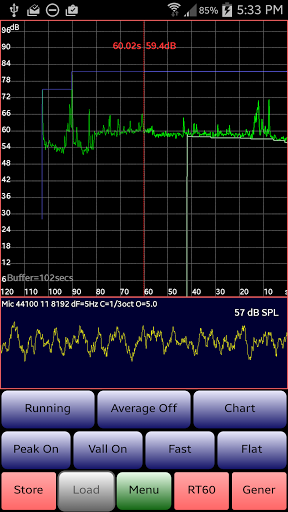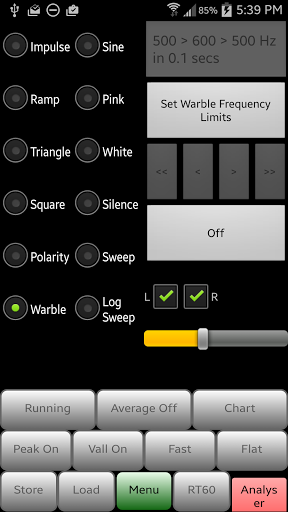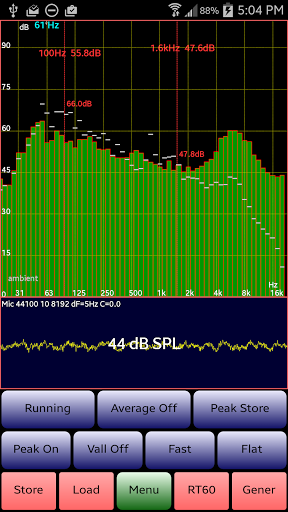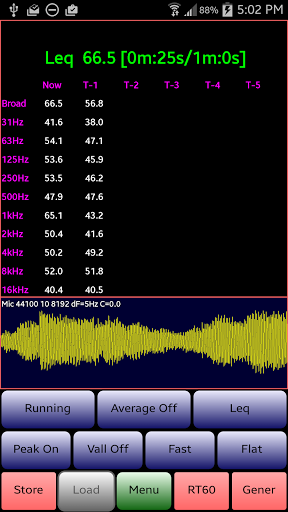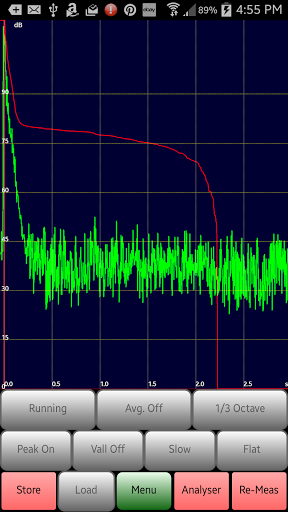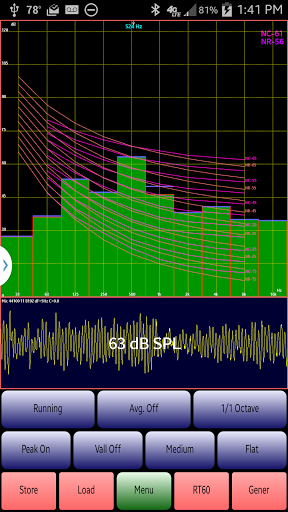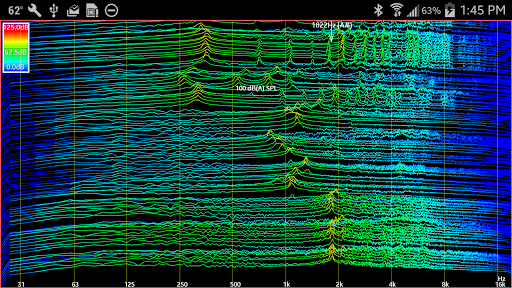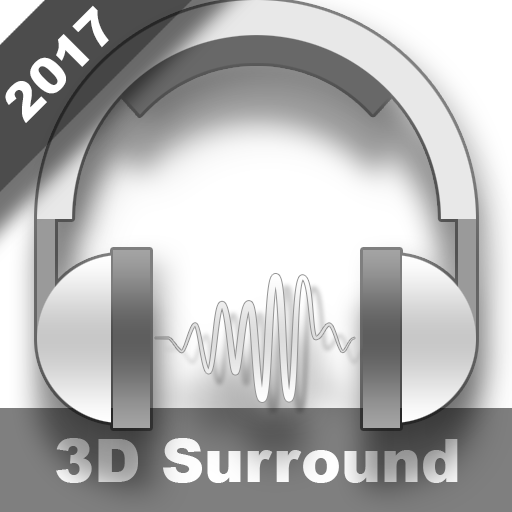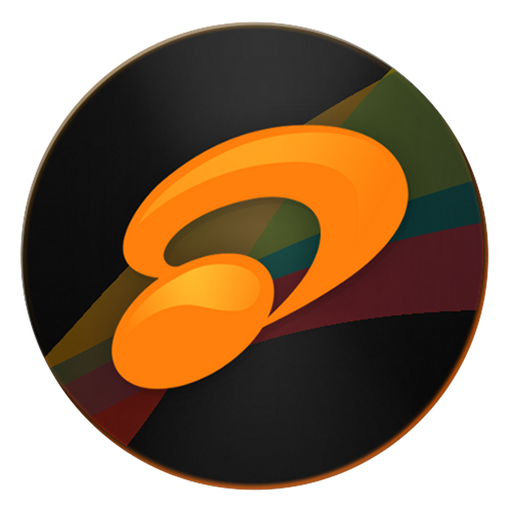Highlights
This is the best app for monitoring sound
RT60 tool works great even with factory mic
Now it is the best Android app for acoustical analysis
Awesome audio tool for audio engineers
This is the best RTA app I've found for Android
Works perfect with the calibrated mic from Parts Express
Very helpful support forum as well
A fantastic quality tool for the price
Its superb and unique app for the sound professionals
The best sound package I have found so far
Aside from a very poor response curve from my phone's microphone
Font sizes still way too small on graphs for S6
You need to exit and restart to get it going again
Price is ridiculously low for such functions
Description
SPL (deciBel) Meter featuring RT60, Leq, Spectrum Analyzer, Spectrogram, Chart Recorder, Signal Generator, Polarity Checker, and Mic calibration. Recommended by "Sound and Vision"magazine. Loved by Audio Engineers worldwide: check out the Reviews! Features: 1/1, 1/3 & 1/6 octave RTA modes, Leq (wideband, Octave, variable duration), RT60 (wideband, Octave), Peak Store, Spectrogram, Waterfall, Peak frequency, Impulse, Fast, Medium & Slow filters, Flat & A/C Weighting and film industry X Curve, Averaging, SPL Chart Recorder, Noise Criteria (NC and NR), White/Pink Noise, Sine, Square, Triangle, Sweep, Log Sweep, Warble, Ramp and Impulse signals & loudspeaker polarity checker, L/R select. RTA Store & Load, Hann windows, pinch to zoom, scroll to center. Exclusive ISO 1/3 Octave Calibration - can correct for your phone's microphone response. Octave calibration discs are moved up or down to obtain a flat response, and match the overall SPL to that of an external meter. Save/Restore of Cal files (popular Dayton Audio iMM-6 also supported). Use: gig measurements, home theater, acoustics, car, etc. AudioTool FFTs sets of microphone samples. Aliasing reduced by Hann windowing. SPL calculated in realtime. Spectra may be saved, then loaded and displayed with the live spectrum. The "Store"button stores the current live spectrum - "Load"shows a list of stored spectra to select. To hide the buttons, tap the screen. To restore them, tap again. To zoom the scale, pinch the screen. To move the scale, drag it up or down (left or right). A pair of cursors can be shown: each can be moved to any position, and will display the SPL & time/frequency values there. Initially, both cursors are initially positioned mid-screen - simply drag them to a new position with the fingertip. The cursors can be turned on and off in the Menu. The loudspeaker polarity checker can be used to check whether a loudspeaker is wired in phase: connect the AudioTool output to the speaker under test, select "Polarity"from the signal generator screen, then return to the RTA screen. If the speaker is out of phase (polarity reversed) AudioTool will show "Pol ---", otherwise "Pol +++"if the speaker is in phase. The Noise Criteria (available from the Menu) function shows a set of NC contours overlaid on the 1/1 Octave RTA display and the calculated real time current NC value is also shown. The Chart Recorder shows a moving trace of the SPL measurements over the last few minutes. RT60 measurements can be made via the "RT60"button, and then using a loud clap (or similar) to trigger the measurement. RT60 can also be used with Pink Noise from the AudioTool generator. RT60 times measure how much reverberation or echo there is in a room, space or venue. The Signal Generator generates White and Pink Noise, Sine, Square, Triangle and Ramp waves, Sine Wave Linear and Log Sweeps, Warbles and Impulses. The generator uses multiple cycled buffers, refreshed randomly so ensuring truly random White/Pink noise. Pink Noise algorithm uses Kemmet's method to adjust White into Pink. The frequency accuracy of the generated periodic signals is typically around 1%. Sine wave fidelity is good throughout most of the audio range. Other signals' leading and trailing edges show ringing and decreasing frequency response artifacts in the upper ranges, depending on the Android used. This description is a very terse version of the manual, which may be accessed here: https://sites.google.com/site/bofinit/audiotool Please join the friendly AudioTool Discussion Group to request features, find/request Calibration files, or report problems. Feedback is always welcome: http://groups.google.com/group/audiotool-discussion-group Disclaimer: AudioTool's performance depends on your Android hardware, and is not guaranteed to meet any audio measurement or safety standards.
More

